Uncategorized
-
 Science & Society
Science & SocietySyria’s World Heritage Sites severely damaged by war
Satellite images reveal that five of the country’s six World Heritage Sites have suffered damage and some structures have been completely destroyed.
By Beth Mole -
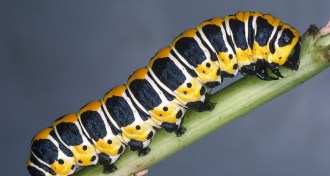 Life
LifeFledgling birds change rules for caterpillar color
An unusual experiment shows that larvae lose the advantage of warning colors during the seasonal flush of naïve predators.
By Susan Milius -
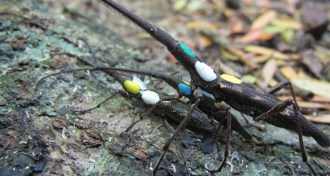 Animals
AnimalsSneaky little giraffe weevils beat big rivals
A little stealth gives smaller giraffe weevil males a leg up when competing with big ones for mates.
By Susan Milius -
 Health & Medicine
Health & MedicineRecovery time from surgery foretold
Blood samples taken from patients after surgery might reveal who is destined for a quick rebound.
By Nathan Seppa -
 Health & Medicine
Health & MedicineMore than 1 million Ebola cases may hit West Africa by January
New projections of the outbreak suggest that without drastic improvements, weekly cases could increase from hundreds to thousands.
By Nathan Seppa and Janet Raloff -
 Astronomy
AstronomyWater found on Neptune-sized world
Just four times as wide as Earth, HAT-P-11b is the smallest exoplanet known to store water in its atmosphere.
-
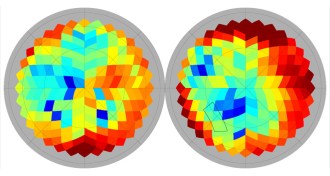 Cosmology
CosmologyGravitational wave discovery gives way to Milky Way dust
New polarization maps from the Planck satellite suggest that the BICEP2 announcement this year of primordial gravitational waves might be due entirely to dust in our galaxy.
-
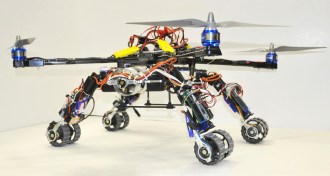 Tech
TechHybrid robot merges flier with two snakelike machines
A helicopter robot can airlift snakelike search-and-rescue bots out of tight situations.
By Meghan Rosen -
 Health & Medicine
Health & MedicineStatins may improve odds of surviving a bleeding stroke
Common cholesterol-lowering drugs called statins may help people who have suffered a stroke caused by ruptured blood vessels.
By Nathan Seppa -
 Neuroscience
NeuroscienceDyslexic brain may solve some math problems in a roundabout way
Children with dyslexia rely heavily on right brain to do addition problems.
-
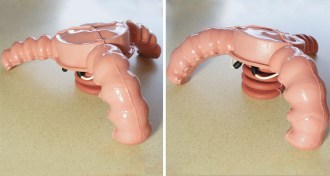 Tech
TechHopping robot powered by explosions
A soft-bodied robot that can jump with the help of an explosion could one day aid search-and-rescue operations.
By Meghan Rosen -
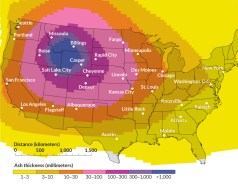 Earth
EarthSupervolcano blast would blanket U.S. in ash
A new simulation illustrates the explosiveness of the volcano that lurks beneath Yellowstone National Park in Wyoming.